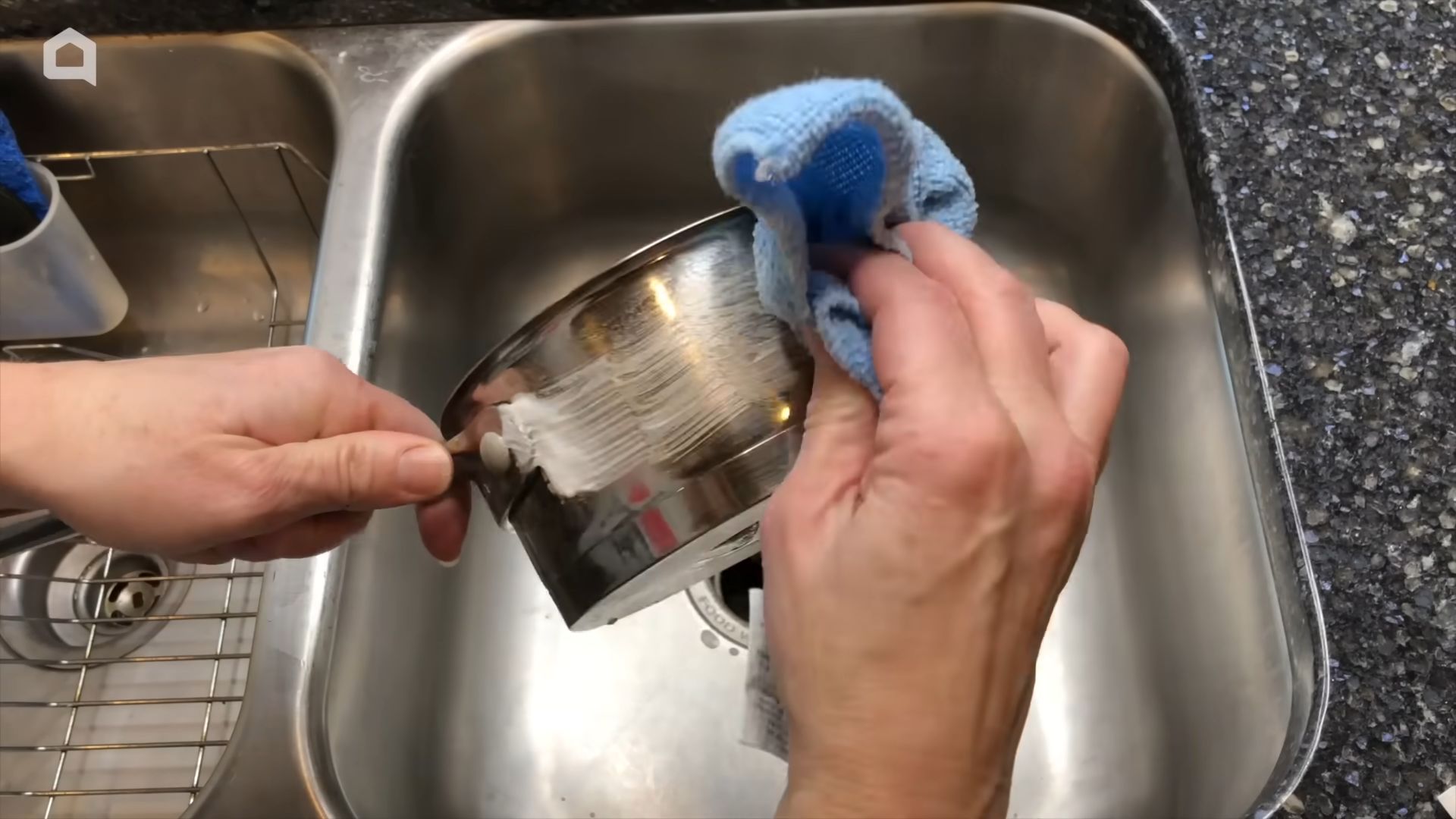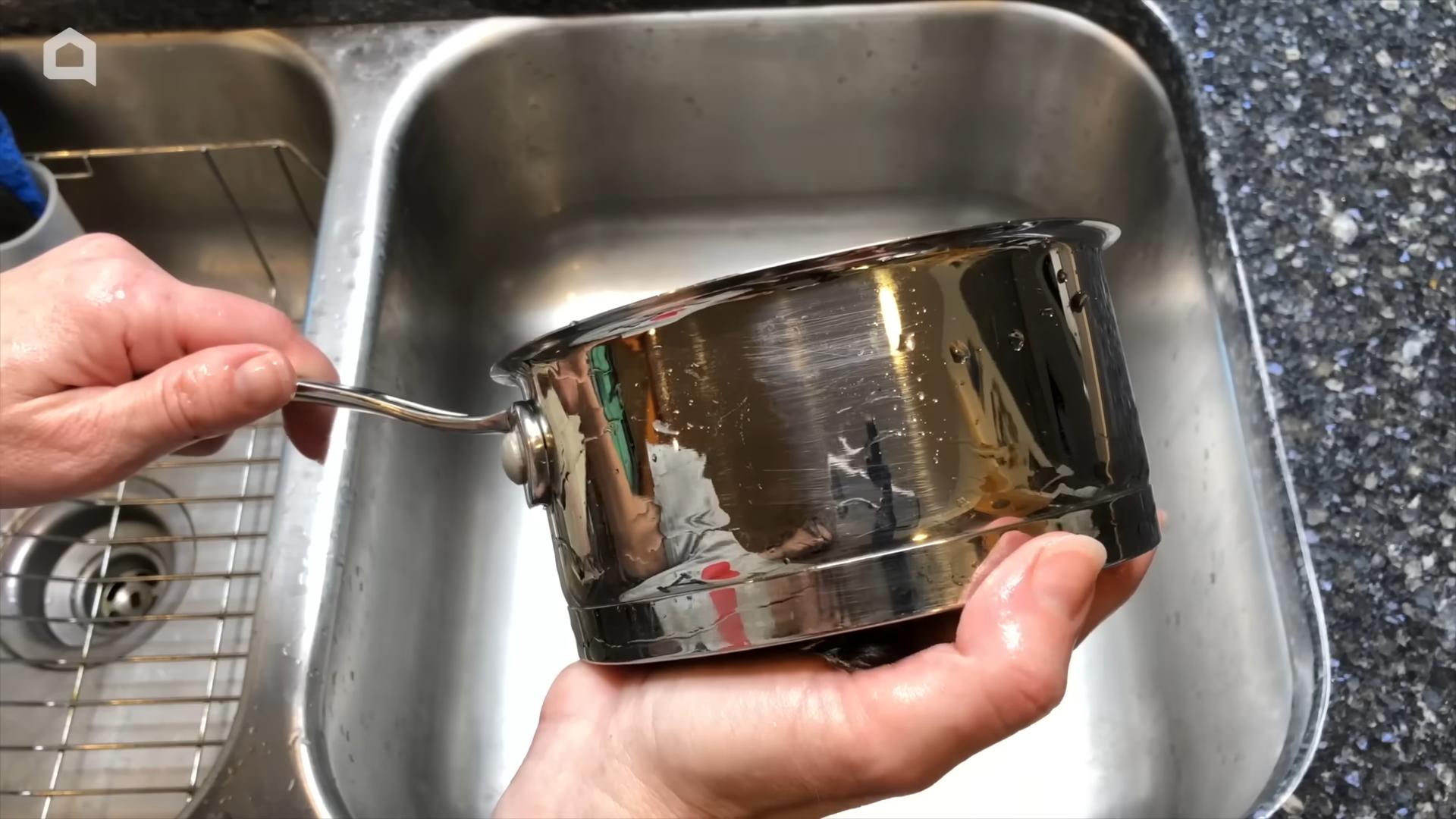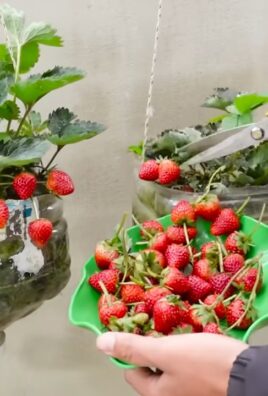Baking Soda Problem Solver: Your Secret Weapon for a Thriving Garden!
Have you ever looked at your garden and wished you had a magic wand to fix all those little problems popping up? Well, maybe I can’t offer you a wand, but I can offer you something just as powerful: baking soda! This humble kitchen staple is more than just a leavening agent; it’s a surprisingly versatile tool for tackling a whole host of gardening challenges.
For generations, gardeners have whispered about the amazing uses of baking soda, passing down tips and tricks like treasured family secrets. While its exact origins in gardening are a bit hazy, its widespread availability and non-toxic nature have made it a go-to solution for everything from pest control to pH balancing. Think of it as your grandmother’s secret weapon for prize-winning roses, now available to you!
Why do you need these baking soda problem solver hacks? Because gardening can be tough! Pests, diseases, and nutrient imbalances can quickly derail your efforts. But with a little baking soda know-how, you can address these issues naturally and affordably, without resorting to harsh chemicals. I’m excited to share some simple, effective DIY solutions that will help you keep your garden healthy and vibrant. Let’s get started and unlock the full potential of this amazing ingredient!

Baking Soda: Your DIY Problem Solver for Home and Body
Hey there, fellow DIY enthusiasts! I’m always on the lookout for simple, effective solutions to everyday problems, and baking soda is my absolute go-to. It’s inexpensive, readily available, and surprisingly versatile. Forget those expensive, specialized cleaners and remedies – baking soda can handle a ton of tasks around your home and even help with some personal care needs. Let’s dive into some of my favorite baking soda hacks!
Deodorizing and Cleaning
Baking soda is a natural deodorizer and mild abrasive, making it perfect for tackling odors and grime.
* The Science Behind It: Baking soda neutralizes acidic and basic odor molecules, effectively eliminating smells instead of just masking them. Its mild abrasiveness helps lift dirt and stains without scratching surfaces.
* Safety First: While generally safe, avoid using baking soda on delicate surfaces like gold, silver, or aluminum, as it can potentially scratch them. Always test in an inconspicuous area first.
Freshening Up Your Fridge
That lingering smell in your refrigerator? Baking soda to the rescue!
1. Gather Your Supplies: All you need is an open box of baking soda.
2. Prepare the Baking Soda: Simply open a fresh box of baking soda.
3. Placement is Key: Place the open box in the back of your refrigerator.
4. Replace Regularly: Replace the box every month or two for optimal odor absorption. I usually write the date I opened it on the box to remind myself.
Cleaning Your Microwave
Microwave splatters can be a pain to clean. Here’s a simple baking soda solution:
1. Mix Your Solution: Combine 4 tablespoons of baking soda with 1 quart of warm water in a microwave-safe bowl.
2. Microwave Magic: Microwave the solution on high for 3-5 minutes. The steam will loosen the grime.
3. Wipe Away the Mess: Carefully remove the bowl (it will be hot!) and wipe down the inside of the microwave with a clean cloth or sponge. Stubborn spots might need a little extra scrubbing with a baking soda paste.
Deodorizing Your Trash Can
Trash cans can get pretty stinky. Here’s how to keep them fresh:
1. Sprinkle and Forget: After emptying and cleaning your trash can, sprinkle a generous amount of baking soda at the bottom.
2. Absorb the Odors: The baking soda will absorb odors until the next time you empty the can.
3. Regular Refresh: Reapply baking soda each time you change the trash bag.
Cleaning Grout
Grimey grout lines? Baking soda can help!
1. Make a Paste: Mix baking soda with a little water to form a thick paste.
2. Apply and Scrub: Apply the paste to the grout lines and let it sit for a few minutes.
3. Scrub Away: Use an old toothbrush or grout brush to scrub the grout lines.
4. Rinse Clean: Rinse with water and admire your sparkling grout!
Cleaning Burnt Pots and Pans
Burnt food stuck to your pots and pans? Don’t despair!
1. Soak and Sprinkle: Fill the pot or pan with water and add a few tablespoons of baking soda.
2. Simmer Gently: Bring the mixture to a simmer on the stovetop for about 10-15 minutes.
3. Let it Cool: Let the pot or pan cool slightly.
4. Scrub Away: Use a non-abrasive sponge or scrubber to loosen the burnt food. You might need to repeat the process for really stubborn messes.
Baking Soda for Personal Care
Baking soda isn’t just for cleaning; it can also be used for various personal care applications.
* Important Note: Always do a patch test before using baking soda on your skin, as some people may experience irritation. Avoid using it on broken or irritated skin.
DIY Deodorant
Commercial deodorants can contain harsh chemicals. Try this simple baking soda deodorant:
1. Mix It Up: Combine 1/8 teaspoon of baking soda with a few drops of water to form a paste.
2. Apply Sparingly: Apply a thin layer of the paste to your underarms.
3. Patch Test First: Remember to do a patch test on a small area of skin before applying it to your entire underarm area.
4. Adjust as Needed: If you experience any irritation, discontinue use. You can also try mixing the baking soda with a carrier oil like coconut oil to make it gentler.
Teeth Whitening (Use with Caution!)
Baking soda can help remove surface stains from your teeth, but it’s abrasive, so use it sparingly.
1. Make a Paste: Mix a small amount of baking soda with water to form a paste.
2. Brush Gently: Brush your teeth with the paste for about two minutes.
3. Rinse Thoroughly: Rinse your mouth thoroughly with water.
4. Limit Usage: I only do this once or twice a week at most, as excessive use can damage your tooth enamel.
Foot Soak
Soothe tired, achy feet with a baking soda foot soak.
1. Prepare the Soak: Fill a basin with warm water and add 2-3 tablespoons of baking soda.
2. Soak and Relax: Soak your feet for 15-20 minutes.
3. Enjoy the Relief: The baking soda will help soften your skin and relieve foot odor.
Exfoliating Scrub
Baking soda can be used as a gentle exfoliating scrub.
1. Mix with Cleanser: Mix a small amount of baking soda with your favorite facial cleanser.
2. Gently Exfoliate: Gently massage the mixture onto your face in circular motions.
3. Rinse Thoroughly: Rinse your face thoroughly with water.
4. Limit Usage: I only use this scrub once or twice a week to avoid over-exfoliating my skin.
Baking Soda for Laundry
Baking soda can boost your laundry detergent’s cleaning power and help eliminate odors.
* How it Works: Baking soda helps regulate the pH level in the wash water, allowing your detergent to work more effectively. It also neutralizes odors, leaving your clothes smelling fresh.
Laundry Booster
Add baking soda to your laundry to boost its cleaning power.
1. Add to the Wash: Add 1/2 cup of baking soda to your washing machine along with your regular laundry detergent.
2. Wash as Usual: Wash your clothes as usual.
3. Enjoy Cleaner Clothes: Your clothes will be cleaner and fresher.
Odor Eliminator
Baking soda can help eliminate stubborn odors from your laundry.
1. Soak Stinky Items: For heavily soiled or smelly items, soak them in a solution of water and baking soda (1/2 cup per gallon of water) for several hours or overnight.
2. Wash as Usual: Wash the items as usual.
3. Say Goodbye to Odors: The baking soda will help neutralize the odors.
Other Clever Uses
The possibilities with baking soda are endless! Here are a few more ideas:
Unclogging Drains
A clogged drain? Try this baking soda and vinegar trick:
1. Pour in Baking Soda: Pour about 1/2 cup of baking soda down the drain.
2. Follow with Vinegar: Follow with 1 cup of white vinegar.
3. Let it Fizz: Let the mixture fizz for about 30 minutes.
4. Flush with Hot Water: Flush the drain with hot water.
5. Repeat if Necessary: You may need to repeat the process for stubborn clogs.
Cleaning Your Car
Baking soda can be used to clean various parts of your car.
1. Upholstery Cleaner: Sprinkle baking soda on your car’s upholstery and let it sit for a few hours. Then, vacuum it up. This will help absorb odors and freshen the upholstery.
2. Carpet Cleaner: Make a paste of baking soda and water and apply it to stains on your car’s carpets. Let it dry completely, then vacuum it up.
3. Headlight Restorer: Mix baking soda with water to form a paste and use it to scrub your car’s headlights. This can help remove oxidation and improve visibility.
Testing Soil pH
If you’re a gardener, baking soda can help you test your soil’s pH.
1. Collect Soil Sample: Collect a small sample of soil from your garden.
2. Mix with Water: Mix the soil with water to form a muddy slurry.
3. Add

Conclusion
So, there you have it! This simple yet incredibly effective baking soda problem solver is more than just a kitchen staple; it’s a versatile solution to a myriad of household woes. From tackling stubborn stains to neutralizing unpleasant odors, and even boosting your beauty routine, baking soda proves time and again its worth as an indispensable DIY ingredient.
Why is this a must-try? Because it’s economical, readily available, and environmentally friendly. Forget harsh chemicals and expensive specialized products. With baking soda, you’re choosing a safer, gentler, and more sustainable approach to cleaning and personal care. Plus, the satisfaction of creating your own solutions and knowing exactly what’s in them is truly rewarding.
But the magic doesn’t stop there. Feel free to experiment and adapt these techniques to suit your specific needs. For instance, if you’re using baking soda as a facial scrub, try adding a drop of honey for extra hydration or a pinch of turmeric for its anti-inflammatory properties. When deodorizing your refrigerator, place the open box of baking soda towards the back, where odors tend to linger. And for a more potent cleaning paste, combine baking soda with a few drops of essential oils like lemon or tea tree for added antibacterial benefits.
The possibilities are truly endless! We encourage you to dive in, explore the many uses of baking soda, and discover your own unique applications. Don’t be afraid to get creative and share your experiences with us. What unexpected ways have you found to use baking soda around your home? What variations have you tried that yielded amazing results?
We’re eager to hear your stories and learn from your insights. Share your tips, tricks, and triumphs in the comments below. Let’s build a community of baking soda enthusiasts and unlock the full potential of this remarkable ingredient together. Remember, a little baking soda can go a long way in creating a cleaner, fresher, and healthier home and lifestyle. So, grab that box of baking soda and get ready to be amazed! You’ll be wondering how you ever lived without this simple, effective, and budget-friendly solution. It’s time to embrace the power of baking soda and transform your home and routine, one scoop at a time.
Frequently Asked Questions (FAQs)
Is baking soda safe to use on all surfaces?
While baking soda is generally safe and gentle, it’s always a good idea to test it on an inconspicuous area first, especially on delicate surfaces like polished wood or certain types of fabric. Baking soda is mildly abrasive, so excessive scrubbing on sensitive materials could potentially cause scratches. For surfaces like marble or granite, it’s best to avoid prolonged contact with baking soda, as it can etch the surface over time. When in doubt, consult the manufacturer’s recommendations for cleaning specific materials.
Can I use baking soda and vinegar together for cleaning?
This is a common question, and the short answer is: it’s not always the best idea. While the combination of baking soda and vinegar creates a fizzy reaction that can be visually appealing, it essentially neutralizes both substances. The resulting mixture is mostly water and sodium acetate, which has very little cleaning power. While it won’t necessarily harm anything, it’s not as effective as using either baking soda or vinegar separately. For example, you can use baking soda to scrub surfaces and then follow up with a vinegar rinse for disinfection.
How long does an open box of baking soda last for odor absorption?
An open box of baking soda typically lasts for about three months for odor absorption. After that, its effectiveness diminishes as it becomes saturated with odors. To maximize its lifespan, shake the box periodically to expose fresh baking soda to the air. After three months, don’t throw it away! You can still use it for cleaning purposes, such as scrubbing sinks or toilets. Simply pour the used baking soda down the drain followed by hot water to help freshen and deodorize the plumbing.
Is there a difference between baking soda and baking powder?
Yes, there is a significant difference. Baking soda (sodium bicarbonate) is a single ingredient that requires an acidic component (like vinegar, lemon juice, or buttermilk) to activate its leavening properties in baking. Baking powder, on the other hand, contains baking soda plus an acidifying agent and a drying agent. It’s a complete leavening agent that only needs moisture to activate. Using baking soda and baking powder interchangeably will result in baking failures.
Can I use baking soda to whiten my teeth?
Baking soda can be used as a mild abrasive to help remove surface stains from teeth, leading to a brighter appearance. However, it’s important to use it sparingly and gently, as excessive use can erode tooth enamel over time. It’s also crucial to consult with your dentist before using baking soda as a teeth-whitening agent, especially if you have sensitive teeth or other dental concerns. There are many toothpastes that contain baking soda in safe and effective concentrations.
How can I use baking soda to relieve heartburn?
Baking soda can provide temporary relief from heartburn by neutralizing stomach acid. To use it for this purpose, dissolve about half a teaspoon of baking soda in a glass of water and drink it slowly. However, it’s important to note that this is only a temporary solution and should not be used regularly. Frequent use of baking soda for heartburn can lead to electrolyte imbalances and other health problems. If you experience frequent or severe heartburn, consult with your doctor to determine the underlying cause and appropriate treatment.
What are some other creative uses for baking soda in the garden?
Baking soda has several surprising uses in the garden. You can use it to test the pH of your soil (although a professional soil test is more accurate). It can also be used to deter pests like ants and cabbage worms. Some gardeners believe that baking soda can help prevent fungal diseases like powdery mildew, although the evidence is mixed. You can also use it to sweeten tomatoes by sprinkling a small amount around the base of the plants. Always use baking soda sparingly in the garden, as excessive amounts can harm plants.
Is baking soda safe for pets?
Baking soda is generally considered safe for pets in small amounts. It can be used to deodorize pet bedding or to create a dry shampoo for pets who don’t like baths. However, it’s important to prevent your pet from ingesting large quantities of baking soda, as it can cause stomach upset and electrolyte imbalances. If you suspect that your pet has ingested a significant amount of baking soda, contact your veterinarian immediately.
How can I use baking soda to remove stains from clothing?
Baking soda is an excellent stain remover for clothing. For fresh stains, sprinkle baking soda directly onto the stain and let it sit for at least 30 minutes to absorb the moisture and odor. Then, vacuum or brush away the baking soda. For tougher stains, make a paste of baking soda and water and apply it to the stain. Let it sit for several hours or overnight, then launder as usual. Baking soda is particularly effective for removing stains like grease, dirt, and food spills.
Can baking soda help with foot odor?
Yes, baking soda is a great remedy for foot odor. Its alkaline properties help neutralize the acids that cause foot odor. You can soak your feet in a basin of warm water with a few tablespoons of baking soda for about 15-20 minutes. You can also sprinkle baking soda inside your shoes to absorb moisture and odor. For best results, use baking soda regularly as part of your foot care routine.




Leave a Comment